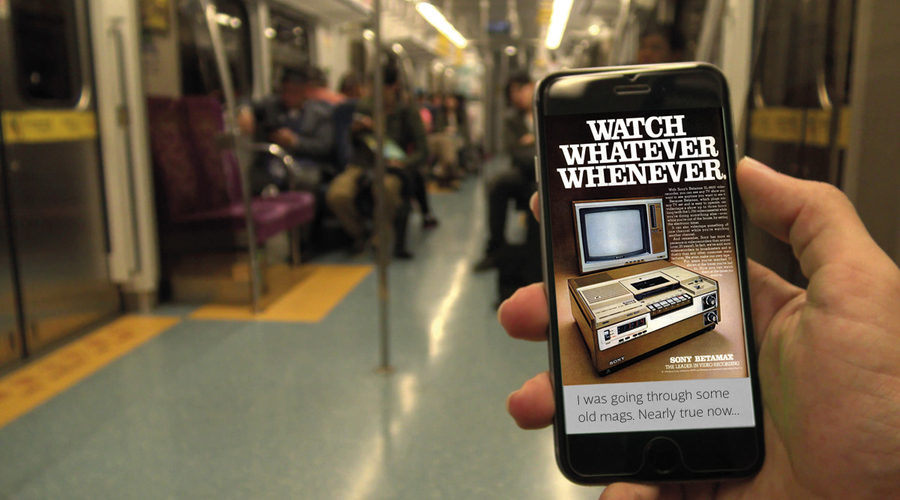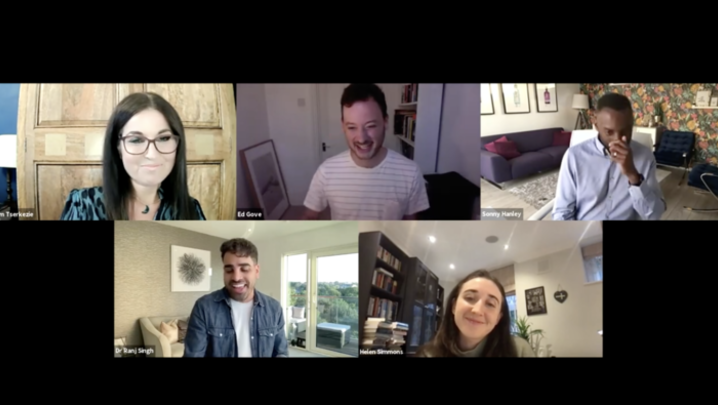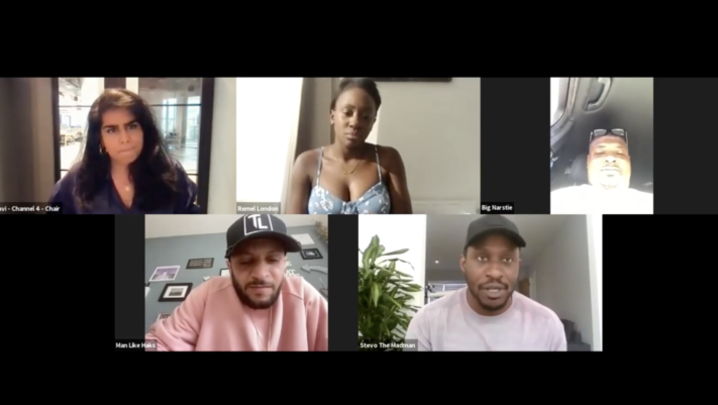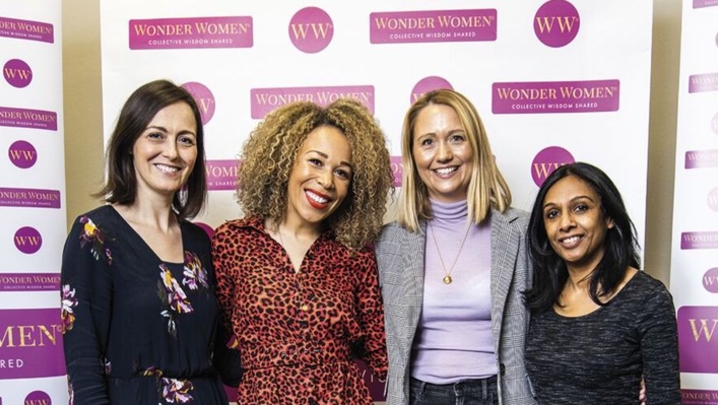Technical innovations are driving viewing options to new heights. Kate Bulkey explores the consequences
On the 50th anniversary of IBC, a record number of broadcasting and cinema professionals met for the annual technology jamboree in Amsterdam. The six-day event typically covers a wide range of topics. This year was no exception, with fake news, the rise of artificial intelligence and machine learning all prominent.
But, arguably, the real theme of IBC 2017 was the growing power of consumer choice. This is manifested most obviously in viewers’ ability to pick and choose what, when and where they watch programmes.
The big digital platforms, Facebook, Amazon, Netflix and Google, have been fundamental to this transformation in viewing habits. In Amsterdam, it was clear that their consumer-friendly products continue to disrupt traditional business models.
Kim Poder, CEO of the Danish unit of Scandinavia’s Modern Times Group, put it bluntly. In an IBC Conference keynote address, he said that the only way forward for competitors of Netflix and YouTube was to tailor their offers to keep up with the changing patterns of video consumption.
He warned: “It’s important to remember that there are a lot of competitors coming in, so don’t be a fat cat and sit on your hands. Change your business model and adapt to new audiences.”
Over the past five years, MTG has invested in three new businesses: e-sports, online gaming and online video content creation. The priority has been to grab the attention of viewers aged under 35.
One spur has been the size of the live crowds who gather to watch e-sports. In February of this year, 173,000 young fans attended a five-day e-sports gaming event in Katowice, Poland.
“It was insane, and not just for the fans in the arena,” said Poder. “We put this out on 70 broadcasters around the world, and it was on YouTube and Facebook. We had 40 million unique viewers for this one event.” For younger audiences, this is no different to watching a regular football match. Indeed, in many respects, it is more appealing because they often feel more connected to the gamers.
MTG forecasts its e-sports business will grow 40% in the course of this year. Poder said that other TV companies were following MTG, with similar online expansion plans.
Both Amazon and Facebook had big and busy stands at IBC. Facebook product director Daniel Danker presented the company’s new “Watch” tab for long-form video. He told delegates that video on Facebook was “exploding” and represented 50% of mobile data traffic, a percentage that he expected to rise to 75% within five years.
Facebook is pushing the new video tab hard and will reportedly commission up to $1bn of original content, including reality TV, comedy and even live sports, in 2018.
Danker showcased several shows on stage, including: Humans of New York, a weekly series based on a photo-blog by Brandon Stanton; Hala Madrid, which follows Spanish football team Real Madrid; and Returning the Favor, a series that features ordinary Americans doing good works.
Facebook Live is, clearly, a key part of the company’s strategy, and Danker, who was involved in its launch, claimed that Live events attracted 10 times more comments than recorded video. With audiences demonstrably more engaged, Facebook can secure higher ad rates for live video.
Danker declined to say when Watch would launch outside the US. He emphasised that Facebook’s secret sauce was that, unlike YouTube, its videos were based on the many and varied user communities that the social network attracted. “Any producer can find a loyal audience on Watch,” he claimed.
Not everyone, however, was certain that Facebook would prove itself to be the right platform for audiences seeking long-form video. Brian Sullivan, President and COO of Fox Networks Digital Consumer Group, said that he was “highly sceptical that long-form video would migrate to social platforms”. He suggested that the average video viewing time on social media was “about three seconds”.
And he doubted that all broadcasters would have direct-to-consumer offers over the next few years, even though viewers were demanding Netflix-like, easy-to-use, binge-viewing-capable TV experiences.
Fox Networks’ new Fox Now streaming service is available via pay-TV platforms. It aggregates content from all five Fox-owned networks – NatGeo, Fox Sports, FX, Fox and Fox News.
Sullivan said that the key difference between Fox Now and its rivals was that, as a hybrid of VoD and live TV, it offered a single navigation system for all content.
“The power has come back to the consumer and we are all having to find ways to deal with it,” he said. A big part of this shift had been the re-aggregation of TV services into “digital MVPDs [multichannel video programming distributions]” such as Sling and Hulu, the latter part-owned by Fox.
The VoD theme was also very evident on the exhibition floor, as well as at the conference. Hall 14’s Content Everywhere Hub has developed over the past few years from a slightly peripheral zone, where edgier start-ups clustered, to a destination space for many IBC delegates.
Ben Keen, an independent media analyst, noted that “both Facebook and Google choose to exhibit in Hall 14, rather than in the mainstream halls”.
This is despite fears in some quarters that the internet distribution bubble may be set to burst, given that there are so many competing VoD services.
“There are clearly far too many companies claiming to do pretty much the same thing, usually an ‘end-to-end OTT video solution’ or similar”, added Keen. OTT (over the top) video is the catch-all term for online distribution, and covers all streamed or downloaded live TV, VoD or “buy-to-own” products.
Keen predicted “a shake-out among the content players and service providers rushing to launch their own OTT subscription video propositions. Only the strongest will survive.”
Even so, OTT delivery is proving attractive to companies in the sports world. In August, Disney announced that it would an launch an app for its premium ESPN brand (due in early 2018), and, in May, the English Football League launched its iFollow app. Both made presentations at IBC.
The EFL’s marketing director, Drew Barrand, said clubs were hoping to gain substantial income from iFollow, which gives overseas fans live streaming access to league games. It launched with Nottingham Forest vs Millwall, the Championship’s opening game on 4 August. At IBC, Barrand admitted that there was a balance to be struck between TV rights and streaming rights: “It’s not either/or.”
On the same conference panel, Alicia Klein, director of platforms and distribution at the IAAF, the organising body for track and field athletics, said that social media platforms were “bringing tension into the business”.
She believed that rights holders needed to develop a more “sophisticated” understanding and appreciation of fan data. “We can’t have only a passive relationship with fans through television,” she insisted. “Fans, particularly younger fans, want a live conversation – and that platform isn’t TV, it’s Snapchat, it’s Instagram.”
Meanwhile, fake news – sometimes aided and abetted by the big digital platforms, particularly Facebook – was discussed by William Lewis, CEO of Dow Jones. He argued that regulating the “digital giants” was as important as publishers discovering new business models. “The days are gone when I could say, ‘Come to my site or sod off’,” he said.
The fast-growing importance of artificial intelligence was dramatised by a session featuring Sophia, an AI-powered humanoid robot, and her inventor, David Hanson of Hanson Robotics, based in Hong Kong.
Sophia spoke directly to the audience in a convincingly lifelike manner and took random questions. Hanson explained that she even had her own stylist to make her look human. But, as she was only a year old, her AI still had a lot to learn.
The discussion between Hanson and Sophia underlined the speed of advances in AI in a way that the equally “intelligent”, but disembodied, voices of Amazon’s Alexa or Apple’s Siri don’t.
Finally, conference attendees heard that a study by Walker, a customer intelligence group, forecast that, by 2020, customer experience would overtake both product and price as the differentiator that mattered most to consumers, including those of TV businesses.
For a convention concerned with the merits of competing technological advances in Ultra-HD, data compression algorithms, CGI and a host of other fields, this was a useful reminder of the fundamentals of business.





